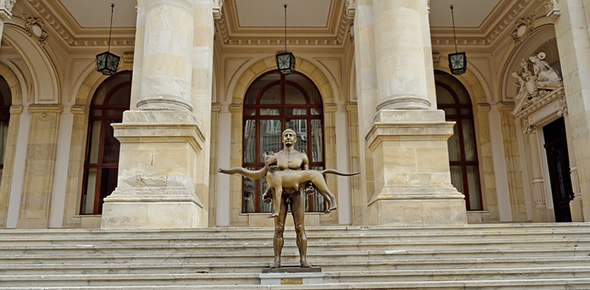Related Flashcards
Related Topics
Cards In This Set
| Front | Back |
|
1) The Civil Rights Act of 1964 prohibits employment discrimination based on A) color, alienage, sex, and religion.
B) religion and sex only. C) race, creed, color, and religion. D) race, national origin, and pregnancy. E) color, sex, religion, and wealth. |
C
|
|
2) During the George W. Bush administration, key enforcement priorities of the U.S. Justice Department's Civil Rights Division included
A) voting rights, race, and sex discrimination.
B) immigration and deportation. C) race, sex, and religious discrimination. D) voting rights and sex trafficking. E) religious discrimination and sex trafficking. |
B
|
|
3) Why did northern senators initially oppose adding Missouri to the union?
A) Missouri would be a free state.
B) The Missouri Constitution did not include civil liberties protections. C) Adding Missouri would violate a treaty the United States had signed with various Indian tribes. D) Missouri would be a slave state. E) Missouri had fought alongside the Confederacy during the Civil War. |
D
|
|
4) ________ was a well-known abolitionist who started a newspaper called the North Star.
A) William Lloyd Garrison
B) Harriet Beecher Stowe C) Elizabeth Cady Stanton D) Lucretia Mott E) Frederick Douglass |
E
|
|
5) Abolitionists worked towards
A) ending slavery.
B) abolishing suffrage rights for women. C) the emancipation of women. D) repealing the Civil War Amendments. E) guaranteeing the continued existence of slavery in any new state added to the union. |
A
|
|
6) What was the primary agenda at the Seneca Falls Convention? A) guaranteeing the continued existence of slavery
B) abolition of women's suffrage C) equal rights for men and women D) promotion of de jure discrimination E) abolition of slavery |
C
|
|
7) The World Anti-Slavery Society refused to A) admit Fredrick Douglass as a member.
B) react to the Missouri Compromise. C) admit more than 200,000 members. D) given women an equal role in their meetings. E) Choices C and D are both correct. |
D
|
|
8) The Seneca Falls Convention was 8) _______ A) actually held in the city of New York. B) called to help implement the Missouri Compromise. C) held to discuss the civil and political rights of women. D) called to draw additional attention to slavery. E) held prior to the World Anti-Slavery Society Meeting. |
C
|
|
9) "The little woman who started the big war," A) describes Elizabeth Cady Stanton's report of the Seneca Falls Convention.
B) is Frederick Douglass's characterization of Elizabeth Cady Stanton. C) is Mary Todd Lincoln's characterization of herself. D) is the first line of Uncle Tom's Cabin. E) is Abraham Lincoln's characterization of Harriet Beecher Stowe. |
E
|
|
10) In Dred Scott v. Sandford (1857), the U.S. Supreme Court ruled that slaves were
A) allowed to own property in Southern states.
B) to be counted as three-fifths of a person in the 1860 census. C) allowed to bring suits in federal courts. D) not U.S. citizens. E) prohibited in the North. |
D
|
|
11) In Dred Scott v. Sandford (1857), the U.S. Supreme Court ruled that
A) women were U.S. citizens but did not have the right to vote.
B) slaves were U.S. citizens. C) women were not U.S. citizens and, therefore, did not have the right to vote. D) slavery was prohibited north of a set geographical boundary. E) the Missouri compromise was unconstitutional. |
E
|
|
12) The Missouri Compromise of 1820
A) eliminated tensions over the slavery issue.
B) prohibited slave trading, but allowed slavery to continue in existing areas. C) gave all lands west of the Missouri River to the Indians. D) provided that all new states would be admitted in pairs: one free state and one slave state. E) was found to be unconstitutional by the Supreme Court. |
E
|
|
13) Slavery was banned throughout the United States by the
A) Fourteenth Amendment.
B) Emancipation Proclamation. C) Thirteenth Amendment. D) Twelfth Amendment. E) Fifteenth Amendment. |
C
|
|
14) What were Black Codes?
A) laws passed in southern states to deny rights to newly freed slaves
B) Supreme Court decisions that mandated separate but equal facilities for newly freed slaves C) unsuccessful attempts by northern states to recruit newly freed blacks to work in northern factories D) laws passed in northern states to guarantee rights to newly freed blacks E) restrictions placed on the right of newly freed slaves to own property in the North |
A
|
|
15) Under which laws could unemployed or vagrant African-Americans be arrested and forced to work off their fines?
A) Jim Crow Laws
B) Grandfather Laws C) Black Codes D) Miscegenation Statutes E) Uncle Tom Laws |
C
|





